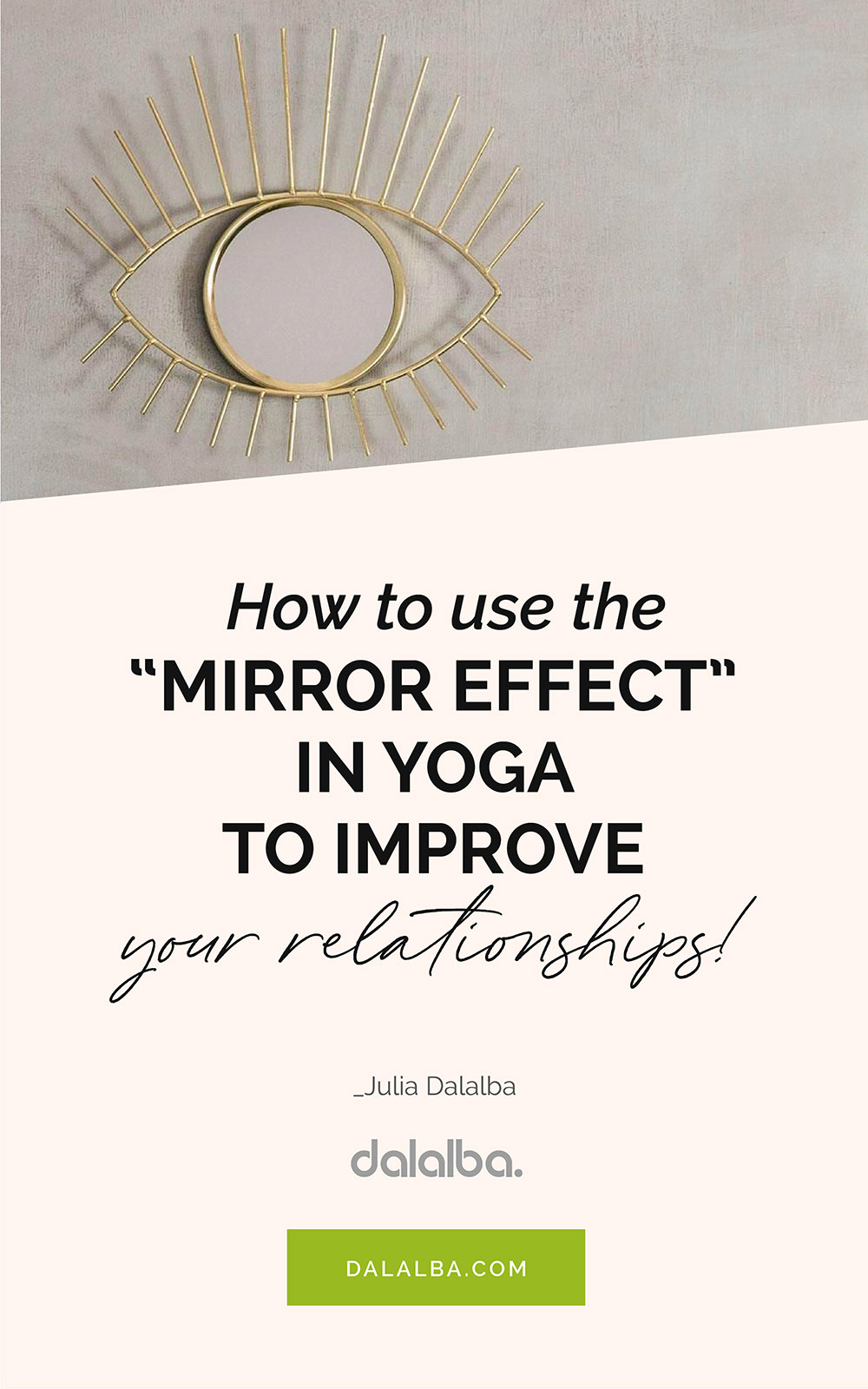How to use the mirror effect in Yoga to improve your relationships
If in the previous post I told you where to place the mirrors at home according to Vastu Shastra and, in this post, we will talk about how to use the mirror effect in Yoga to improve your personal relationships. They are two different paths for the same goal: to optimize your inner temple’s energy through your environment.
Maybe you’re still wondering… what’s the mirror effect about?
“Mirror mirror on the wall who is the fairest of them all?” And the answer may not always be what you’ll love to see and hear. What we see on the other side may enchant or terrify us but, whatever we see, it’s always a projection of ourselves outwards.
The mirror effect is a way of seeing yourself reflected in others for your own self-study, development and inner healing. This is done through the people around you, all you have to do is carefully observe what emotions or thoughts arise within you when you interact with them. It’s an exercise in inner contemplation. It requires a lot of attention, observation and sincerity with oneself. Otherwise, we will continue judging, blaming or cursing the attitudes of others, generating bad vibes within ourselves. If you hate your neighbour, that emotion is felt by you, not your neighbour.
Gay Hendricks, an American psychologist that I love, explains in his book “The Big Leap” that most personal conflicts lie in the struggle to show who is right, who is wrong and who is the biggest victim. (He’s so right!)
The key to peace is for both parties to let go of their projection on the other and assume their part of the responsibility. The key to spiritual development through relationships is to have an open mind and heart to learn from each moment.
We have endless opportunities around us to put this into practice!
Mirrors are everywhere: we all have a father, mother, brother, sister, boyfriend or girlfriend, friend, boss, neighbour, shopkeeper and other company beings that arouse emotions, judgments or inspiration in us.
If we admire the person next door for all their qualities, it means that we also have them to a greater or lesser extent in our being. They may be asleep still waiting to be awaken up but believe me, we have them.
On the other hand… we’ve all had some jackanapes in our environment, right? Well, those qualities that we perceive in them and that cause us so much rejection are also within us. They belong to our shadow side and it’s hard to recognize them, but to a greater or lesser extent, they’re also within us. Therefore, all these people are doing us a great favour: they’re showing us the aspects of ourselves that need to find the light.

What steps can we implement to illuminate our shadows?
1) The first step is to become aware, observe what bothers us in others and try to find out why,
2) The second step is to recognize within ourselves what we are ashamed of, reject, hate, suppress or yearn after being trigged.
3) The third step is to integrate it, embrace those shadows with love and tenderness because they’re probably projections of your inner child full of fear and insecurities seeking your warmth and attention.
The question is not to change the other but to learn to accept ourselves and redesign our inner world. That’s noticeable from the outside and reality changes almost immediately. Marie Luis Roy shares in one of her books the following:
“When you look at what is inside of you and are willing to embrace those aspects of yourself that anger you, when you lovingly embrace those separate parts of yourself and hug them to your chest, the miracle happens. It’s like changing your glasses. You see life from another angle. And then, when you go back to see the person who got you out of your boxes, you can tell him: Thank you very much for indicated me the interior places that lack harmony “

How is the mirror effect practiced in Yoga?
My way of approaching the mirror effect from a Yogic point of view is to recognise the opportunities that life place in front of us to put into practice the following yogic principles:
– Ahimsa, no violence towards ourselves or others, whether through thought, word or physical action. If you hurt the person in front of you, you are hurting yourself because we’re all part of the same consciousness. Many people interpret this yama as avoiding physical violence or not killing other beings, but Patanjali was more referring to a mental attitude, rather than body actions. Judging, criticizing, wishing bad things or being disrespectful to others are against this principle. It’s part of what in Christianity calls as “sin”.
– Honesty, especially with ourselves when it comes to seeing our shadows reflected in the person in front of us. Acknowledging what we don’t like in ourselves, reject or feel ashamed of requires exercising honesty and humility with ourselves. An honest attitude also suggests seeing things as they are and accepting the possibility that we have been wrong, to me, is the panacea to avoid many conflicts!
– Self-study, doing an exercise of inner inquiry and discernment after observing the thoughts, emotions or reactions that occur within us when we interact with certain people. It can be your partner, boss, co-workers, friends, family…they’re all mirrors! Some will reflect luminous aspects of you but others will touch you where it hurts the most and there, they will be showing you where your wounds are. Don’t blame them for hitting you where it hurts the most, on the contrary, they’re showing you the spaces of yourself that need healing.
– Devotion, having the will to put this exercise into practice, in my opinion, already reflects an act of self-love and devotion towards the purest essence of you. However, many times, dealing with complicated personal relationships can be very frustrating. The trick is to recognize that the essence of Divinity also beats in the heart of that person in front of you, it doesn’t matter how blind he or she may be. If it’s uphill for you, offer prayers to the Divine, venerate this superior intelligence to show you what’s your learning lesson is in that situation and show you the way. You don’t have to do all the work by yourself, your backpack would be lightened much faster!
Everything that I’ve shared with you in this post was summed up by Jesus in a single sentence more than 2000 years ago: “Why do you look at the speck of sawdust in your brother’s eye and pay no attention to the plank in your own eye?”
Amen!
With light and love,
Julia

